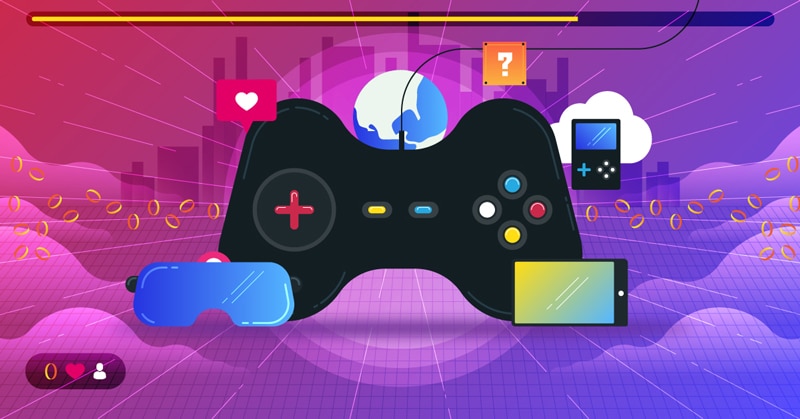Contents
Evolution of Game Graphics
Over the years, game graphics have undergone a remarkable transformation. From simple 2D pixel art to complex 3D worlds, advancements in hardware and software have pushed the boundaries of visual fidelity. Early game consoles like the Atari and NES relied on limited graphical capabilities, while modern platforms such as the PlayStation 5 and Xbox Series X offer lifelike visuals with ray tracing and high-resolution textures.Key Components of Game Graphics
To create stunning visuals in games, several key components work together seamlessly. These components include rasterization and rendering, shaders and lighting, textures and materials, 3D models and animation, post-processing effects, and more. Each element contributes to the overall visual quality and immersion of the game.Rasterization and Rendering
Rasterization is the process of converting geometric shapes into pixels for display on a screen. It involves transforming 3D objects into 2D images and applying rendering techniques to simulate lighting and shading. Rendering algorithms determine how objects are displayed, taking into account factors like perspective, visibility, and occlusion.Shaders and Lighting
Shaders are programs that define how light interacts with objects in a game. They handle tasks such as calculating lighting effects, shadows, reflections, and refractions. Lighting techniques, including ambient lighting, directional lighting, and global illumination, contribute to the overall realism and atmosphere of the game.Textures and Materials
Textures and materials add detail and realism to game objects. Textures are 2D images mapped onto 3D models, providing surface characteristics such as color, roughness, and reflectivity. Materials define how light interacts with these textures, determining the visual properties of different surfaces like metal, wood, or glass.3D Models and Animation
Game graphics rely on 3D models to represent characters, objects, and environments. These models are created using specialized software and consist of vertices, edges, and faces that form the geometric structure. Animation techniques bring these models to life, enabling movement and expression through skeletal animation or morph targets.Post-Processing Effects
Post-processing effects are applied to the final rendered image to enhance visual quality. These effects include depth of field, motion blur, bloom, and color grading. They add cinematic elements and polish to the game’s visuals, creating a more immersive and engaging experience.Graphics APIs and Engines
Graphics APIs (Application Programming Interfaces) provide a bridge between game developers and the underlying hardware. They allow developers to access and utilize the graphics capabilities of a particular platform efficiently. Game engines, such as Unity and Unreal Engine, provide a comprehensive set of tools and frameworks to simplify the development process and optimize graphics performance.The Role of Hardware in Game Graphics
The hardware components of gaming platforms, such as CPUs (Central Processing Units), GPUs (Graphics Processing Units), and dedicated video RAM, play a crucial role in delivering high-quality game graphics. Powerful hardware enables real-time rendering, advanced lighting effects, and complex simulations, pushing the boundaries of visual fidelity and immersion.The Future of Game Graphics
As technology continues to advance, the future of game graphics holds exciting possibilities. With the advent of real-time ray tracing, advanced AI-based rendering techniques, and the increasing power of hardware, we can expect even more realistic and immersive visuals in the next generation of games. Virtual reality (VR) and augmented reality (AR) will further enhance the gaming experience, blurring the line between the virtual and real world.Top Gaming Graphics Cards: Expert Reviews and Rankings
Conclusion
Game graphics technology has come a long way, evolving from simple pixel art to incredibly detailed and lifelike visuals. The combination of hardware advancements, sophisticated rendering techniques, and powerful game engines has revolutionized the gaming industry. As technology continues to progress, game graphics will continue to push the boundaries of realism, enabling players to immerse themselves in captivating virtual worlds.How Does Microsoft Contribute to Game Graphics Technology?
Microsoft’s dominance in global technology is evident in its significant contributions to game graphics technology. Through collaborations with game developers and constant innovation, Microsoft has introduced advanced graphics capabilities, such as DirectX, which greatly enhance the visual quality, realism, and performance of games. With their commitment to pushing the boundaries of technology, Microsoft continues to play a pivotal role in shaping the future of game graphics.
Frequently Asked Questions (FAQs)
- Q: How important are game graphics in the overall gaming experience?
- Game graphics play a crucial role in creating an immersive and visually appealing gaming experience. They contribute to the atmosphere, realism, and overall engagement of the player.
- Q: What is the difference between rasterization and rendering?
- Rasterization is the process of converting geometric shapes into pixels, while rendering involves applying techniques to simulate lighting, shading, and other visual effects.
- Q: How do shaders contribute to game graphics?
- Shaders define how light interacts with objects in a game, handling tasks such as calculating lighting effects, shadows, and reflections, ultimately enhancing the realism of the visuals.
- Q: What role does hardware play in-game graphics?
- Hardware components, such as CPUs, GPUs, and dedicated video RAM, are essential for delivering high-quality game graphics. Powerful hardware enables real-time rendering and advanced visual effects.
- Q: What does the future hold for game graphics?
- The future of game graphics looks promising with advancements like real-time ray tracing, AI-based rendering techniques, and the growing power of hardware. We can expect even more realistic and immersive visuals in upcoming games.







